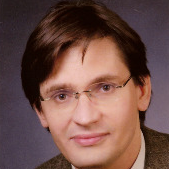Diffusion and Degradation Phenomena in Solid Oxide Materials
A special issue of Crystals (ISSN 2073-4352). This special issue belongs to the section "Crystalline Metals and Alloys".
Deadline for manuscript submissions: closed (30 November 2021) | Viewed by 20416
Special Issue Editors
Interests: solid oxides; perovskites; electrochemistry; renewable energy; surface physics
Special Issues, Collections and Topics in MDPI journals
Interests: physical chemistry of solids; ionic transport across/along interfaces; electrochemistry; renewable energy
Special Issue Information
Dear Colleagues,
Solid oxide fuel cells (SOFCs) and solid oxide electrolyzer cells (SOECs) are key elements for a future emission-free energy system as they allow for storing energy from intermittent renewable sources via electrochemical energy conversion. In order to induce a sufficient ionic conductivity in the solid electrolyte, high operation temperatures of 500 °C to 900 °C are necessary, which demand a sufficient long-term stability, especially under varying applied loads.
To optimize the material performance, a deeper understanding of the fundamental diffusion processes in mixed ionic–electronic conductors under gradients of the chemical and electrical potential is needed. Therefore, the relation between crystallographic structure and ionic conductivity is one of the pivotal research questions. As interfaces and inner surfaces such as grain boundaries and dislocations can also play an important role in the electrochemical performance of an oxide but may simultaneously act as a seed for irreversible phase transformations, the analysis and comparison of the properties of single crystals and ceramics can assist in building heuristic models for mass transport in solid oxides.
The Special Issue aims at serving as a platform for not only research related to the characterization of conventional solid oxides used as fuel cell electrolytes and electrodes, but also research on the synthesis and characterization of novel oxides with enhanced ionic conductivity.
Dr. Christian Rodenbücher
Dr. Carsten Korte
Dr. Qingping Fang
Guest Editors
Manuscript Submission Information
Manuscripts should be submitted online at www.mdpi.com by registering and logging in to this website. Once you are registered, click here to go to the submission form. Manuscripts can be submitted until the deadline. All submissions that pass pre-check are peer-reviewed. Accepted papers will be published continuously in the journal (as soon as accepted) and will be listed together on the special issue website. Research articles, review articles as well as short communications are invited. For planned papers, a title and short abstract (about 100 words) can be sent to the Editorial Office for announcement on this website.
Submitted manuscripts should not have been published previously, nor be under consideration for publication elsewhere (except conference proceedings papers). All manuscripts are thoroughly refereed through a single-blind peer-review process. A guide for authors and other relevant information for submission of manuscripts is available on the Instructions for Authors page. Crystals is an international peer-reviewed open access monthly journal published by MDPI.
Please visit the Instructions for Authors page before submitting a manuscript. The Article Processing Charge (APC) for publication in this open access journal is 2100 CHF (Swiss Francs). Submitted papers should be well formatted and use good English. Authors may use MDPI's English editing service prior to publication or during author revisions.
Keywords
- Solid oxides
- Mixed ionic–electronic conductors
- Oxygen diffusion
- Electrode/electrolyte interfaces
- Grain boundaries and dislocations
- Phase transformations
Benefits of Publishing in a Special Issue
- Ease of navigation: Grouping papers by topic helps scholars navigate broad scope journals more efficiently.
- Greater discoverability: Special Issues support the reach and impact of scientific research. Articles in Special Issues are more discoverable and cited more frequently.
- Expansion of research network: Special Issues facilitate connections among authors, fostering scientific collaborations.
- External promotion: Articles in Special Issues are often promoted through the journal's social media, increasing their visibility.
- Reprint: MDPI Books provides the opportunity to republish successful Special Issues in book format, both online and in print.
Further information on MDPI's Special Issue policies can be found here.







